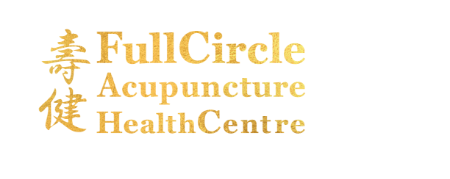He causeth the grass to grow for the cattle, and herbs for the service of humanity. ─Psalm 104:14
中草药 ZHONG CAO YAO - CHINESE HERBAL MEDICINE

Chinese herbal medicine has been largely preserved and supported, resulting in a refined science of herbal chemistry and effects that are well documented; and in China, in the hospital setting, trained herbal pharmacologists prepare complex herbal decoctions and extracts from a very large selection of natural and prepared herbs. The history of Chinese herbal medicine dates back thousands of years, to the time of the legendary Chinese Emperor Shen Nong, born c.2737 B.C. He is considered to be the father of Chinese medicine; he discovered the healing properties of over 365 herbs and other remedies by testing them on himself. The earliest known written version of his Classic Herbal was published in the third century B.C.
The Yellow Emperor’s Classic of Internal Medicine or Huang Di Nei Jing, is a compendium of medical theory and practice attributed to Huang Di or Yellow Emperor who, as legends go in the Chinese ethos, is thought to have lived or to be a mythical character whose age and royal status would provide credence to a contemporary work. Differing opinions date the discovery of the writings between 800 B.C. and 200 B.C. The 28 substances and 12 prescriptions listed in the Nei Jing are the first mention of the Chinese herbal medicine which continues to be practiced today.
By 220 A.D. national and provincial government medical services were established in China. Professional specialties included prescribing physicians, senior physicians, junior physicians, apprentices, and pharmacists. During the Chin Dynasty from 265 A.D. to 420 A.D., the Imperial University was established, and medicine was part of the curriculum. Circa 500 A.D. The Divine Husbandman’s Classic of the Materia Medica was published. This text contained the first references to ‘properties’ of herbs and the first classification system for herbs other than the Five Element tastes. There  were three major categories.
were three major categories.
-Superior herbs – those which nourish life
-Middle Herbs – those which correct constitution
-Inferior herbs – those which expel disease
The Divine Husbandman’s Classic also sorted herbs by taste and temperature, and it warned of toxic herbs. The catalog of substances contained plants, animals, and minerals. In 659 A.D. The Newly Revised Materia Medica, the first illustrated text of herbs, containing 844 entries, was published. 1108 A.D. saw the appearance of the Materia Medica Arranged According to Pattern which had 1558 entries. 1596 A.D. brought The Grand Materia Medica with 1892 entries. By 1977 A.D. 5767 entries were listed in the Encyclopedia of Traditional Chinese Medicinal Substances. The period from 659 A.D. to the 1700’s A.D. saw the birth and evolution of several important components of herbal medicine theory. These components have continued in use to this day.
Over the centuries, Chinese doctors added their knowledge and expertise to the expanding body of literature on Chinese herbal remedies and treatments. Zhang Zhong Jing established a system for the diagnosis and treatment of infectious diseases. Sun Simiao, born c.581 A.D., wrote the first comprehensive encyclopedia of Chinese medicine. His 30-volume work included over 4,500 formulas, many of which are still in use today.
A prominent figure in Chinese herbal medicine history is the renowned physician and naturalist Li Shi Zhen, who lived during the Ming Dynasty 1518-1593. Li Shi Zhen’s major contribution to Chinese herbal medicine was to overhaul the existing literature. His massive Compendium of Materia Medica has been translated into several languages and is considered the leading reference work for Chinese herbal medicine.
The goal of traditional Chinese medicine is the prevention of illness by maintaining balance in all aspects of life. This rationale differs from the conventional Western idea of treating symptoms of an existing disease. In the Chinese philosophy, the focus is on treating the whole patient, hence ‘Holistic medicine.’ Illness is regarded as an imbalance of Yin & Yang in the patient’s body, mind, or spirit. A skilled practitioner of Chinese herbal medicine will choose appropriate herbal formulas to strengthen, nourish and bring the patient Yin & Yang energies back into balance.
At FullCircle Acupuncture HealthCentre we recommend and prepare herbal formulas for our patients based on individual need.
__________________________________________________________________________________________________________________________________________________________________REFERENCES
-Bensky, Dan. Chinese Herbal Medicine : Formulas & Strategies. Seattle, Wash. :Eastland Press, 1990.
-Materia Medica of TCM. School book. 2006.
-Personal classroom notes 2005-2011.
-Above Article Written by Dr. Osorio, Gloria DAOM, L.Ac. 2012.
![]()
